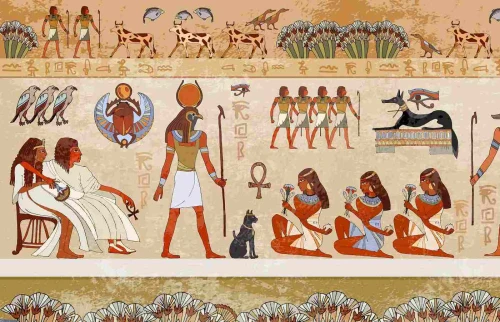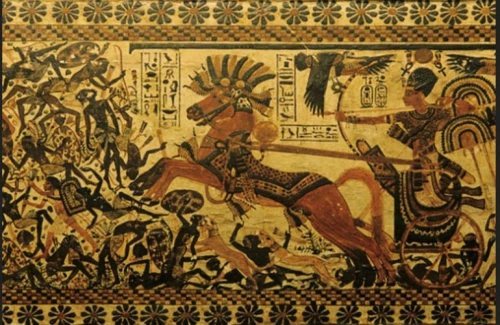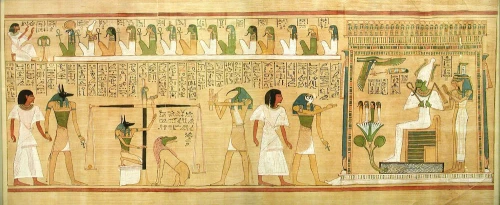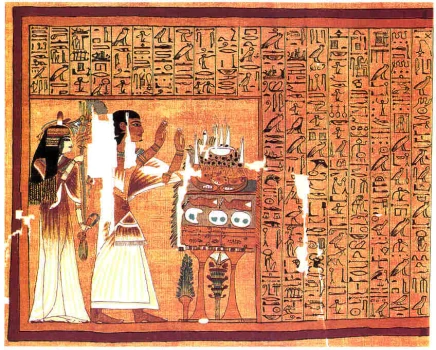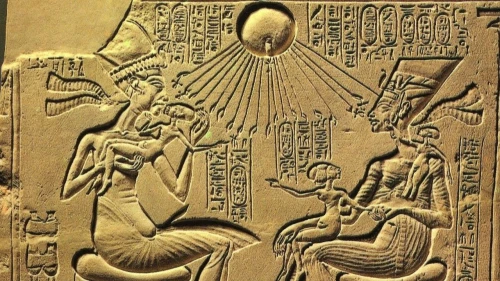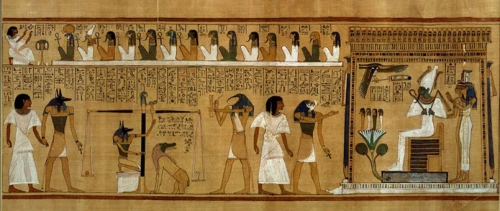
DEIFICATION The process by which a person, living or dead, is declared a god. With the possible exception of Akhenaten, the Egyptians did not deify living people. The king was considered a living god, but he inherited his position; he came into the world as the living manifestation of Horus, and so he was born a god. Some kings reinforced their position as God on Earth by erecting statues of themselves as gods during their reign.
Ramses the Great (1279 - 1213 B.C) placed a statue of himself as Re the sun god beside Amun-Re, Re-Horakhty, and Ptah in the sanctuary of his temple at Abu Simbel. Another statue of Ramses as Amun was found in his mortuary temple at the Ramesseum in Thebes. A handful of private people, revered for their knowledge, achieved deification after death. Perhaps the most notable was Imhotep, vizier (prime minister) and architect to Zoser (2667 - 2648 B.C), the Third Dynasty king for whom the first pyramid was built. Imhotep, a man of many talents, was legendary for his medical skills and wisdom.
He was deified 2,000 years after his death. During the New Kingdom (1550 - 1069 B.C), Amenhotep-son-of-Hapu, who was the architect for but unrelated to Amenhotep III, was honored for his wisdom and medical skills. Like Imhotep, Amenhotep-son-of-Hapu was deified and worshipped as a god of healing. During the Late period (747 - 332 B.C), drowning in the Nile was sometimes reason enough for deification, as was the case with Peter and Pehesi, who drowned in the Nile in Nubia at Dendur.
Antinousthe, companion of the emperor Hadrian also was deified after he drowned in the Nile, and the town of Antinoopolis, the cult center for the worship of Antinous, was built on the banks of the Nile where he died.
 English
English
 Spain
Spain

